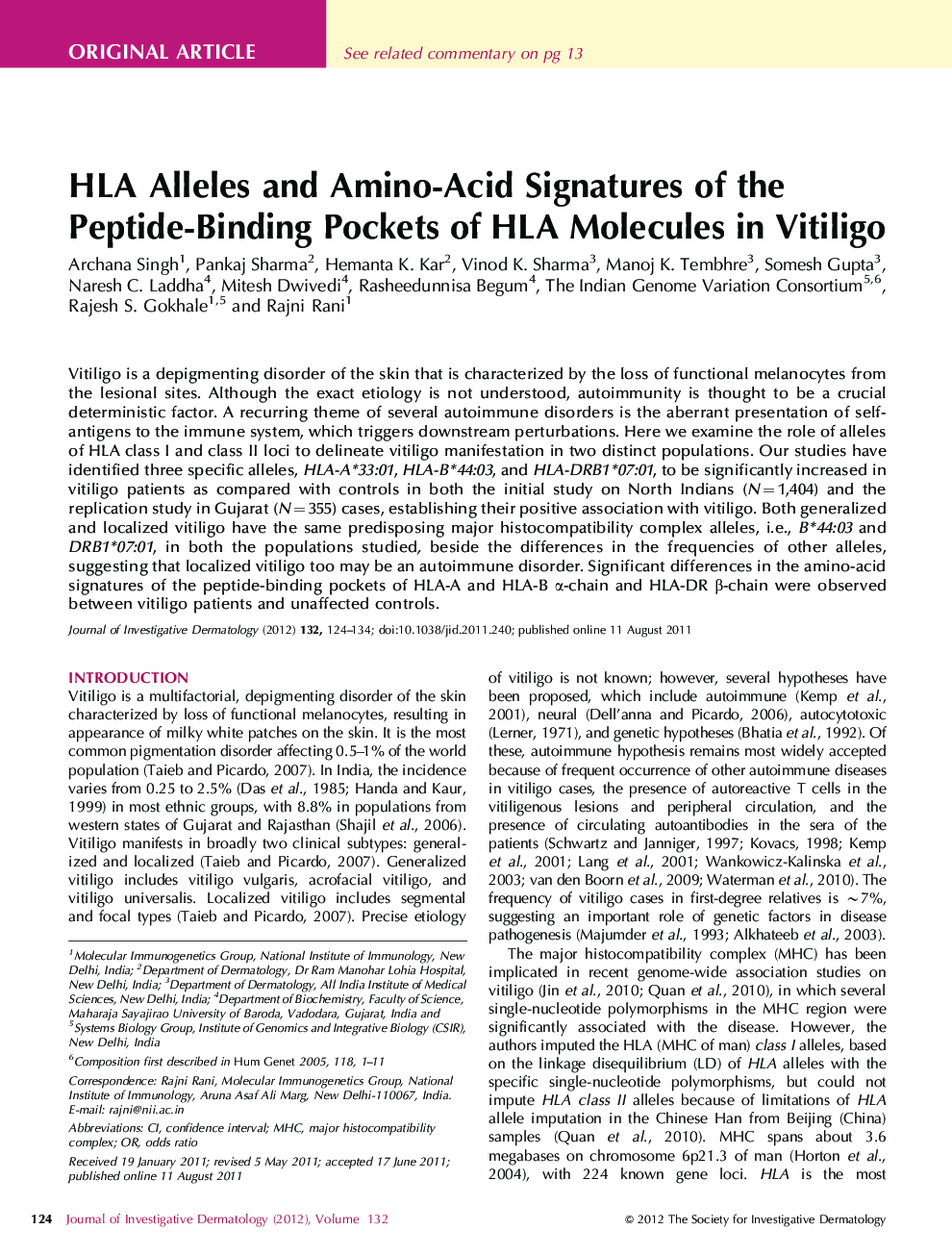| Article ID | Journal | Published Year | Pages | File Type |
|---|---|---|---|---|
| 6077706 | Journal of Investigative Dermatology | 2012 | 12 Pages |
Abstract
Vitiligo is a depigmenting disorder of the skin that is characterized by the loss of functional melanocytes from the lesional sites. Although the exact etiology is not understood, autoimmunity is thought to be a crucial deterministic factor. A recurring theme of several autoimmune disorders is the aberrant presentation of self-antigens to the immune system, which triggers downstream perturbations. Here we examine the role of alleles of HLA class I and class II loci to delineate vitiligo manifestation in two distinct populations. Our studies have identified three specific alleles, HLA-A*33:01, HLA-B*44:03, and HLA-DRB1*07:01, to be significantly increased in vitiligo patients as compared with controls in both the initial study on North Indians (N=1,404) and the replication study in Gujarat (N=355) cases, establishing their positive association with vitiligo. Both generalized and localized vitiligo have the same predisposing major histocompatibility complex alleles, i.e., B*44:03 and DRB1*07:01, in both the populations studied, beside the differences in the frequencies of other alleles, suggesting that localized vitiligo too may be an autoimmune disorder. Significant differences in the amino-acid signatures of the peptide-binding pockets of HLA-A and HLA-B α-chain and HLA-DR β-chain were observed between vitiligo patients and unaffected controls.
Related Topics
Health Sciences
Medicine and Dentistry
Dermatology
Authors
Archana Singh, Pankaj Sharma, Hemanta K. Kar, Vinod K. Sharma, Manoj K. Tembhre, Somesh Gupta, Naresh C. Laddha, Mitesh Dwivedi, Rasheedunnisa Begum, The Indian Genome Variation Consortium The Indian Genome Variation Consortium, Rajesh S. Gokhale,
